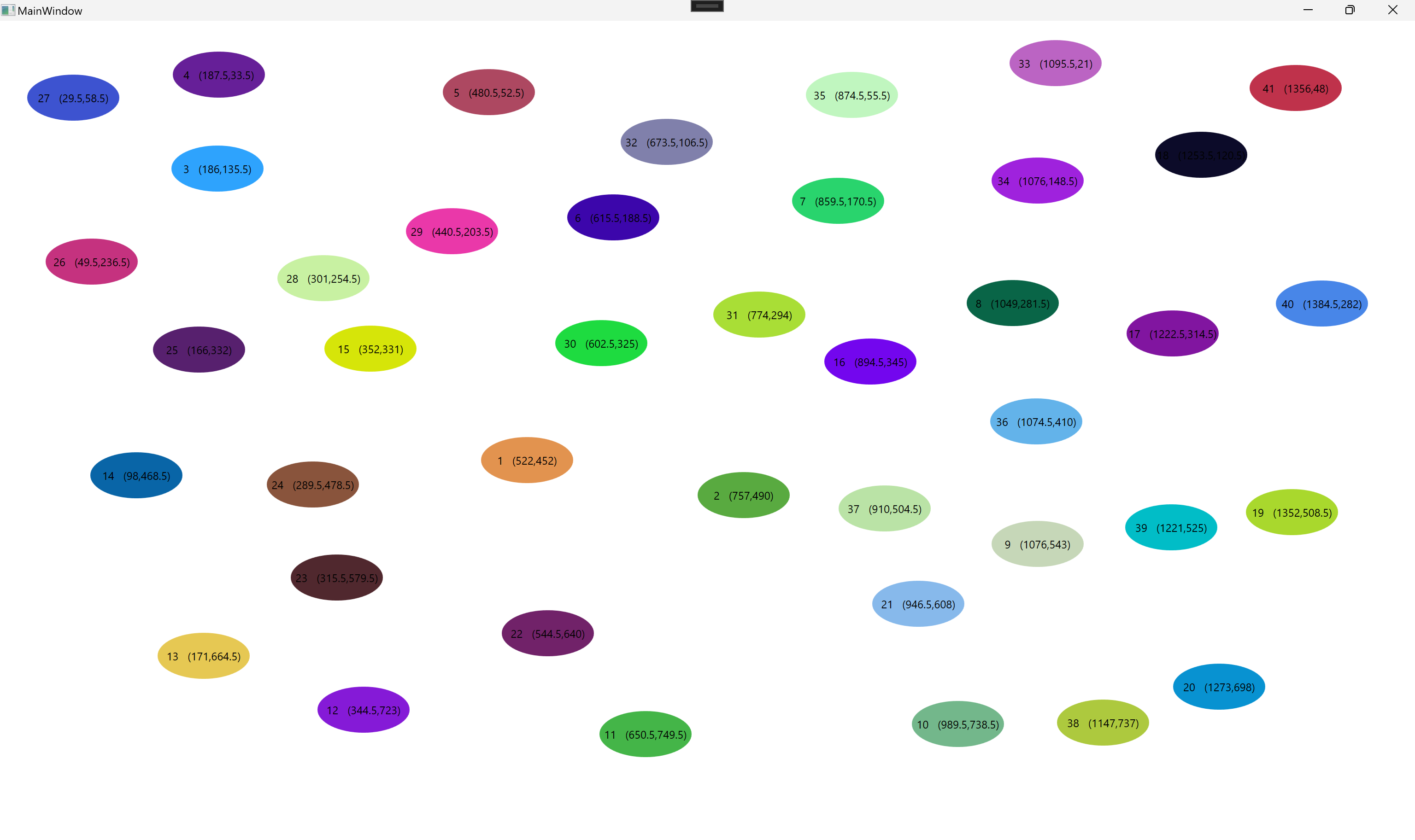//custom control
//xaml
<UserControl x:Class="WpfApp307.ElpTbk"
xmlns="http://schemas.microsoft.com/winfx/2006/xaml/presentation"
xmlns:x="http://schemas.microsoft.com/winfx/2006/xaml"
xmlns:mc="http://schemas.openxmlformats.org/markup-compatibility/2006"
xmlns:d="http://schemas.microsoft.com/expression/blend/2008"
xmlns:local="clr-namespace:WpfApp307"
mc:Ignorable="d"
d:DesignHeight="450" d:DesignWidth="800">
<Grid>
<Ellipse Fill="{Binding ElpBrush,Mode=TwoWay,UpdateSourceTrigger=PropertyChanged}"/>
<TextBlock Text="{Binding ElpStr,Mode=TwoWay,UpdateSourceTrigger=PropertyChanged}"
HorizontalAlignment="Center" VerticalAlignment="Center"/>
</Grid>
</UserControl>
//cs
using System;
using System.Collections.Generic;
using System.Linq;
using System.Text;
using System.Threading.Tasks;
using System.Windows;
using System.Windows.Controls;
using System.Windows.Data;
using System.Windows.Documents;
using System.Windows.Input;
using System.Windows.Media;
using System.Windows.Media.Imaging;
using System.Windows.Navigation;
using System.Windows.Shapes;
namespace WpfApp307
{
/// <summary>
/// Interaction logic for ElpTbk.xaml
/// </summary>
public partial class ElpTbk : UserControl
{
public ElpTbk()
{
InitializeComponent();
this.DataContext = this;
}
public SolidColorBrush ElpBrush
{
get { return (SolidColorBrush)GetValue(ElpBrushProperty); }
set { SetValue(ElpBrushProperty, value); }
}
// Using a DependencyProperty as the backing store for ElpBrush. This enables animation, styling, binding, etc...
public static readonly DependencyProperty ElpBrushProperty =
DependencyProperty.Register("ElpBrush", typeof(SolidColorBrush),
typeof(ElpTbk), new PropertyMetadata(new SolidColorBrush(Colors.Red)));
public string ElpStr
{
get { return (string)GetValue(ElpStrProperty); }
set { SetValue(ElpStrProperty, value); }
}
// Using a DependencyProperty as the backing store for ElpStr. This enables animation, styling, binding, etc...
public static readonly DependencyProperty ElpStrProperty =
DependencyProperty.Register("ElpStr", typeof(string),
typeof(ElpTbk), new PropertyMetadata(""));
}
}
//cs
using System;
using System.Collections.Generic;
using System.Linq;
using System.Runtime.Remoting.Channels;
using System.Text;
using System.Threading.Tasks;
using System.Windows;
using System.Windows.Controls;
using System.Windows.Data;
using System.Windows.Documents;
using System.Windows.Input;
using System.Windows.Media;
using System.Windows.Media.Imaging;
using System.Windows.Navigation;
using System.Windows.Shapes;
namespace WpfApp307
{
/// <summary>
/// Interaction logic for MainWindow.xaml
/// </summary>
public partial class MainWindow : Window
{
Random rnd { get; set; }
private int idx = 0;
Canvas cvs { get; set; }
public MainWindow()
{
InitializeComponent();
rnd = new Random();
cvs = new Canvas();
cvs.HorizontalAlignment = HorizontalAlignment.Stretch;
cvs.VerticalAlignment = VerticalAlignment.Stretch;
cvs.Background =new SolidColorBrush(Colors.Transparent);
cvs.MouseDown += cvs_MouseDown;
this.Content = cvs;
}
private void cvs_MouseDown(object sender, MouseButtonEventArgs e)
{
ElpTbk elp = new ElpTbk();
elp.Width = 100;
elp.Height = 50;
Color clr = new Color();
clr.A = 255;
clr.R=(byte)rnd.Next(255);
clr.G=(byte)rnd.Next(255);
clr.B = (byte)rnd.Next(255);
elp.ElpBrush = new SolidColorBrush(clr);
if(!cvs.Children.Contains(elp))
{
Point p = e.GetPosition(this);
elp.ElpStr = $"{++idx} ({p.X - 50},{p.Y - 25})";
Canvas.SetLeft(elp, p.X-50);
Canvas.SetTop(elp, p.Y-25);
cvs.Children.Add(elp);
}
this.Content = cvs;
}
}
}
![]()








 浙公网安备 33010602011771号
浙公网安备 33010602011771号